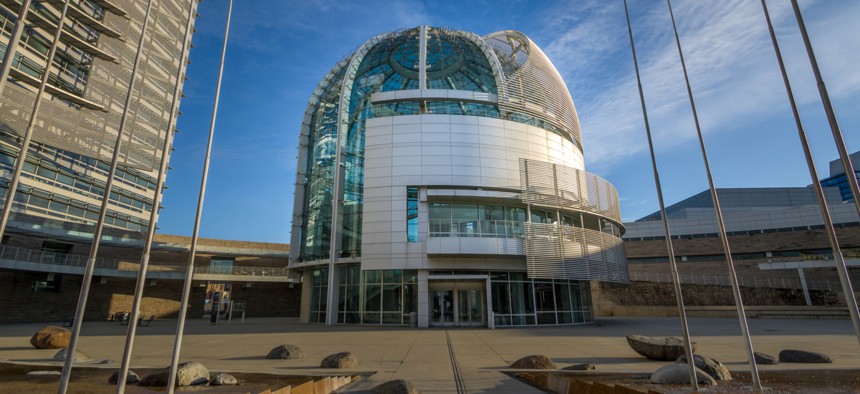Collaborating to Close Silicon Valley’s ‘Homework Gap’

San José City Hall Shutterstock
A new partnership in San José plans to distribute free mobile hotspots to 1 million low-income students over five years.
The city of San José and Sprint announced a partnership on Monday designed to give more than 4,600 students across three metro school districts free mobile hotspots and wireless internet to help close the city’s “homework gap.”
About 5 million U.S. families with schoolchildren lack internet access at home, despite 70 percent of teachers assigning homework requiring web connectivity—disadvantaging those students academically.
To address this need, the Overland Park, Kansas-based telecommunications company started the 1Million Project with a plan to get internet-enabled mobile devices into the hands of 1 million low-income students over five years.
“We as a city have recognized that we live in Silicon Valley, but it is a tale of two cities,” Shireen Santosham, chief innovation officer in the San José Mayor’s Office, told Route Fifty by phone. “A significant part of the population lives on less than $25,000 a year. I think almost a fifth of our households are in that demographic.”
Citywide 95,000 residents lack internet access at home, and across California 40 percent of low-income families aren’t connected—income being the biggest determining factor. What’s more, there’s a portion of the population that simply can’t shoulder any of the costs associated with an internet connection, which makes the fact Sprint’s solution is completely free for students that much more important.
Students are guaranteed 3 GB of high-speed LTE data a month on the Sprint network and unlimited data at 2G speeds if usage exceeds that limit for four years of high school. Subsequent incoming classes will receive the same deal through the five-year life of the project, which will see 9,930 students participate when all is said and done. Every device comes with a content filter preventing adult content and malware from being downloaded.
The city ultimately hopes to expand free internet access to the 180,000 high school students across the Campbell Union High, East Side Union High and San José Unified school districts. By working with a regional team, San José is navigating the most challenging aspects of public-private partnerships like the 1Million Project.
“Think big,” Santosham said. “Many individual teachers and principals are applying for these grants and fighting battles along the way, but if you harness the power of convening . . . a lot of this is about communicating with stakeholders.”
Dave Nyczepir is a News Editor at Government Executive’s Route Fifty and is based in Washington, D.C.
NEXT STORY: Mining emergency calls to improve responses






